Ocellated Eagle Ray Aetobatus ocellatus
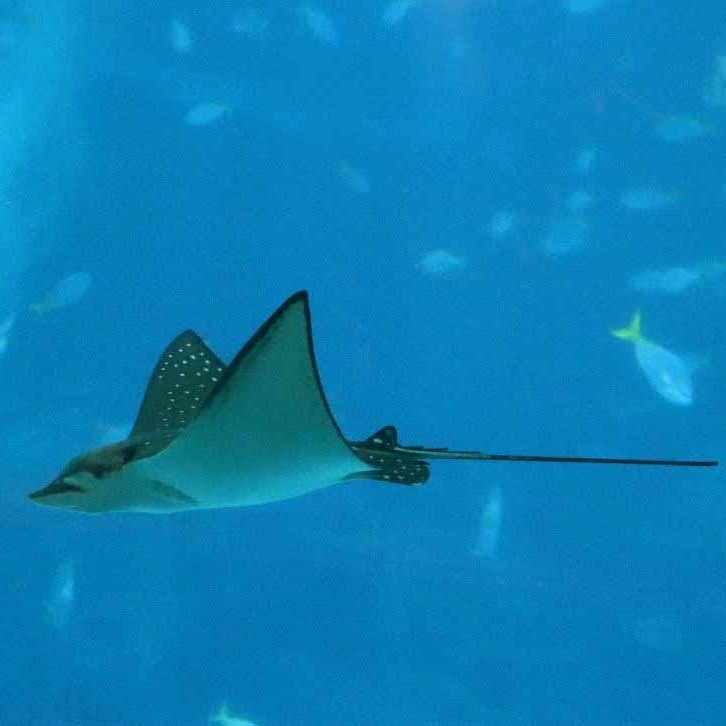
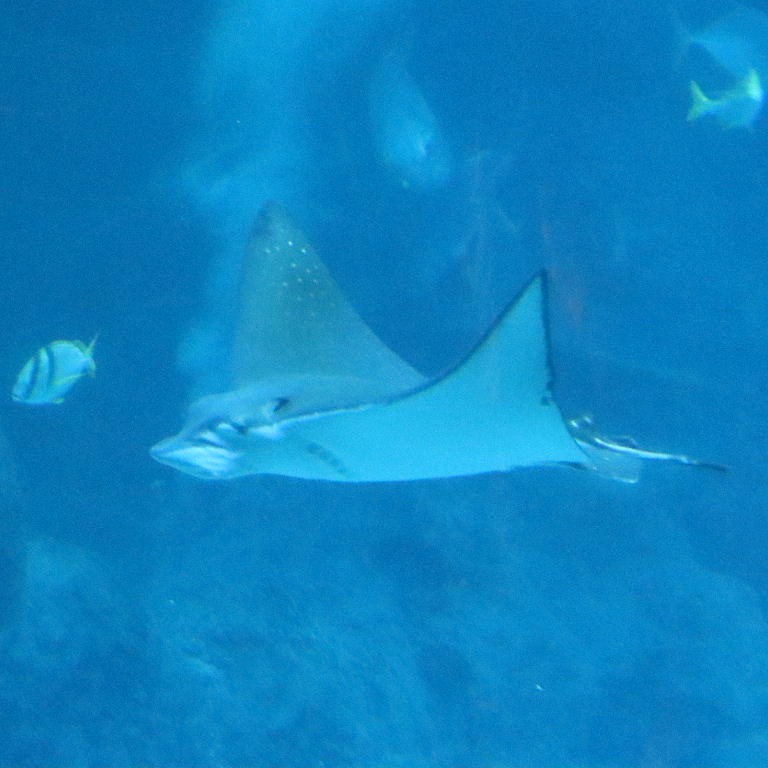
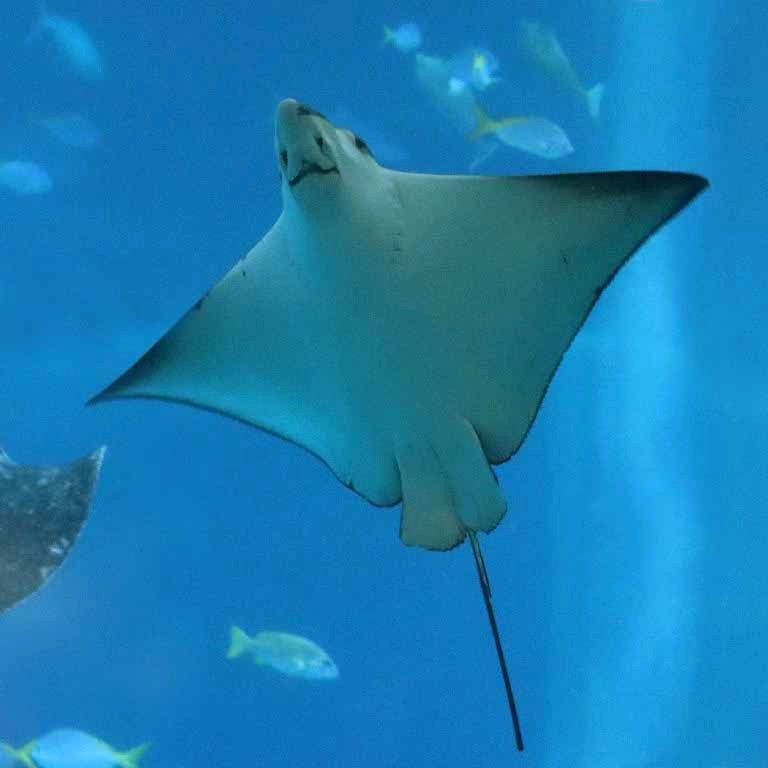
The Ocellated Eagle Ray is native to tropical sandy coasts and reefs of the Indo-Pacific.
The number and pattern of white spots on the dark surface is variable.
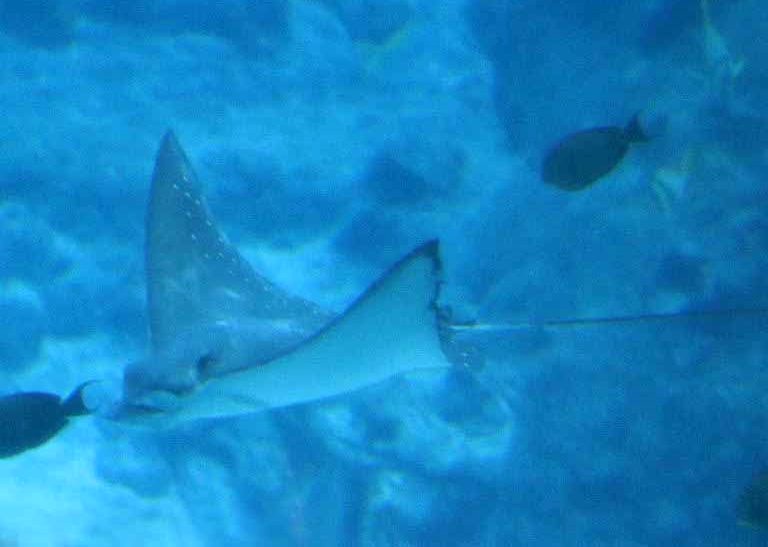
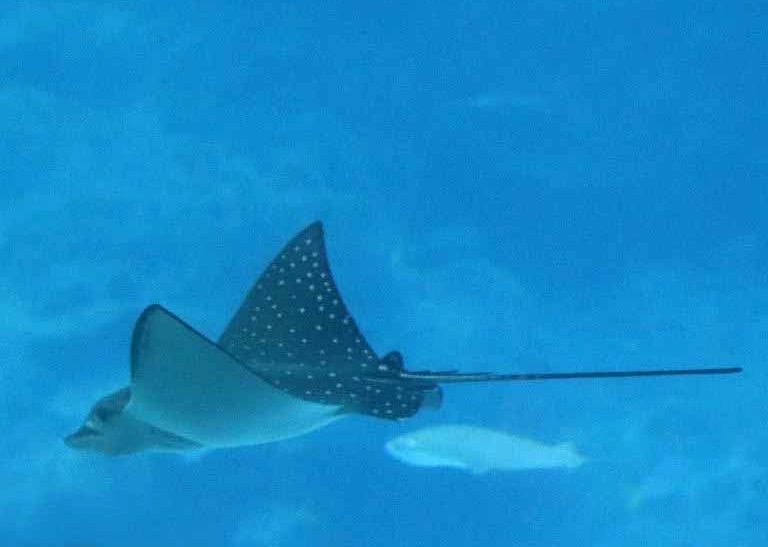
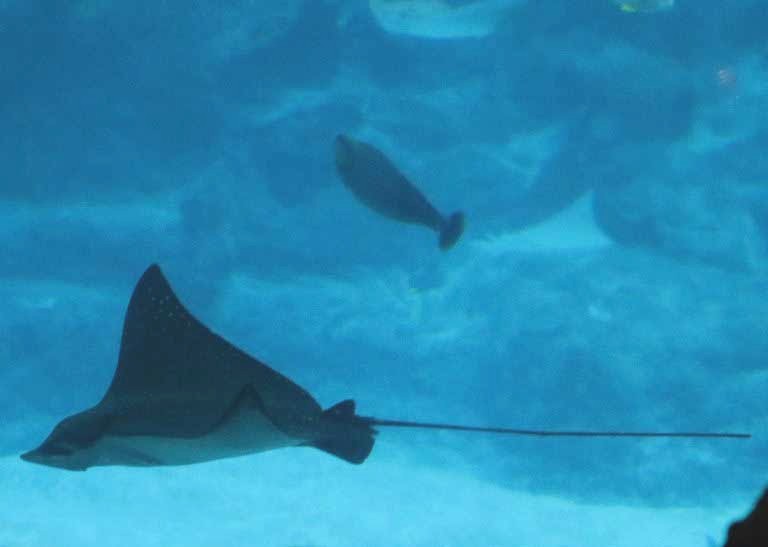
Until recently (2010), the name Ocellated, Spotted and White-spotted were used interchangeably for the
eagle rays with white spots prevalent in tropical, coastal waters worldwide, thought to be one and the same species.
They have now been separated into three species by geographical region, so that the Ocellated is the species in the Indo-Pacific,
the (White-)Spotted is in the Atlantic and the (Pacific) (White-)Spotted is along American west coasts.
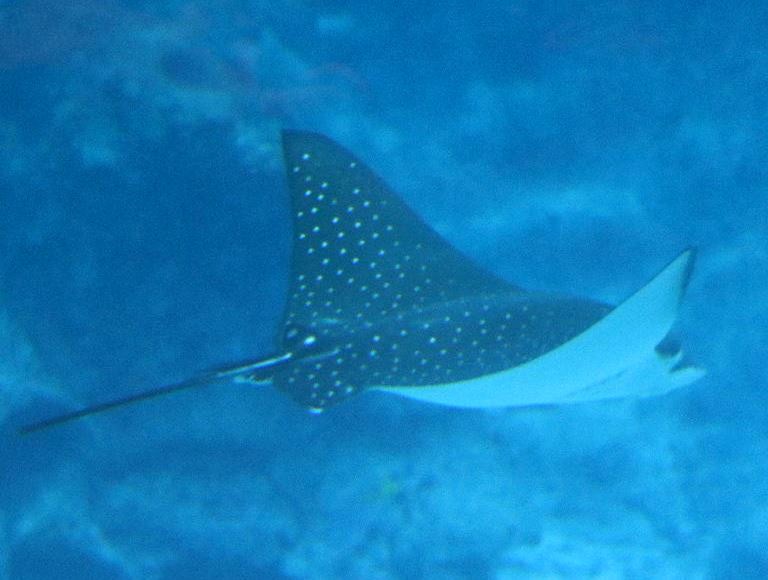
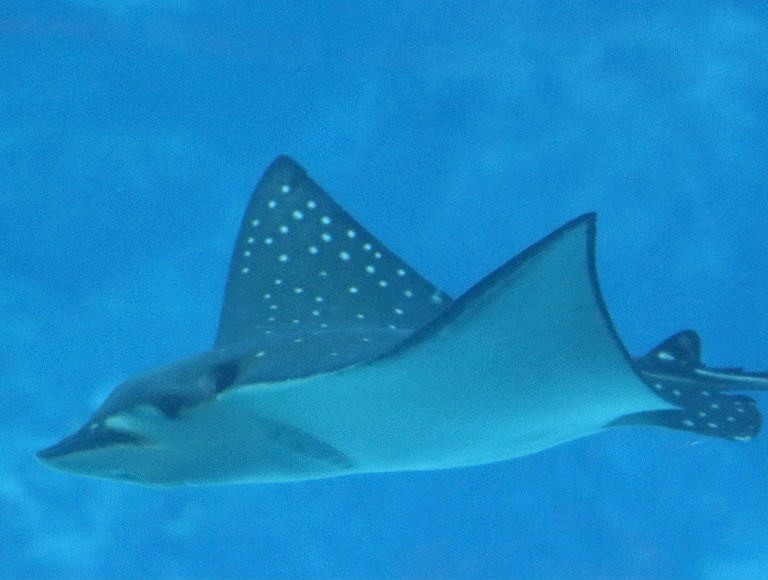
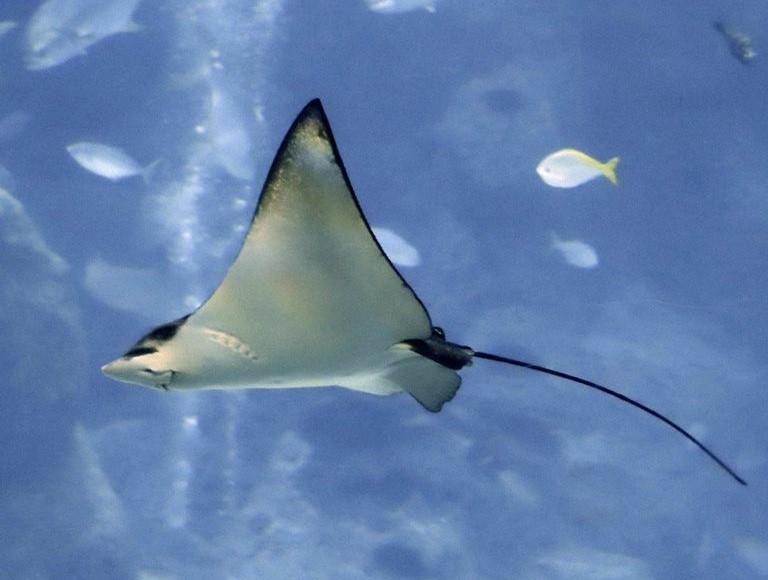
The Ocellated Eagle Ray has a pointed (beak-shaped) snout. The top side is very dark green or black
(unlike the Atlantic White-spotted which is paler brownish or grey). The underside is white.
Among the largest marine rays (excluding mantas), it can grow to over 3 metres wide, but is usually half that, and a long,
thin tail which, if unbroken, can be over twice the disc width (and a slightly longer ratio than the Atlantic White-spotted).
The tail has a venomous spine. Diet is mainly molluscs and crustaceans. The ray is classed as vulnerable, mainly by late maturity
with a low reproductive rate and by commercial fishing activities, mainly unintended bycatch.

